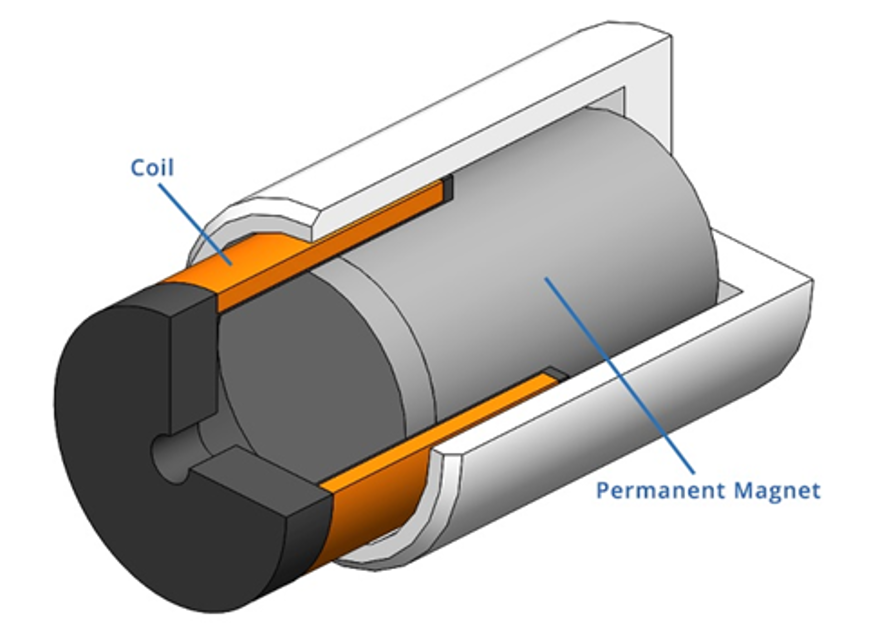The total body scan intends to image the full body of the patient with high-resolution images. However, the human body is not a flat surface, so we will need to take many pictures of the same region, each one focused at a different distance, and compute a super-resolved image combining the regions resolved in each image.
Taking all these pictures will take a lot of time, so one of the goals is to minimize it to reduce the discomfort of the patient that needs to stay still during the acquisition.
In particular, the mechanical movement of the cameras and the refocusing of the lenses will take most of this time. This is one of the reasons why the liquid lenses of Optotune, one of the project partners, were chosen over a traditional mechanical objective. These liquid lenses can change the focal distance in a few milliseconds and can sustain thousands of cycles without losing accuracy. So, what makes them so fast?
Voice coil actuators
The actuator used in the liquid lenses is one of the most common types of electrical motors: the voice coil actuator. It receives its name from its first (and still very important) application as the actuator for loudspeakers. This kind of actuator is based on the force created between a permanent magnet and a coil when electrical current is circulated through the latter. This force is known as the Lorentz force and is proportional to the current in the coil and to the magnetic field created by the permanent magnet.
On paper, voice coil actuators are able to provide infinite forces and hence, generate infinite accelerations. In real life, the force is limited by the generator providing the current and by the ability to extract the heat generated by the circulating current. Similarly, its precision is only limited by the resolution of the current generator. However, these limitations are not intrinsic to the actuator principle, but due to the elements surrounding them.

Basic structure of a voice coil actuator.
